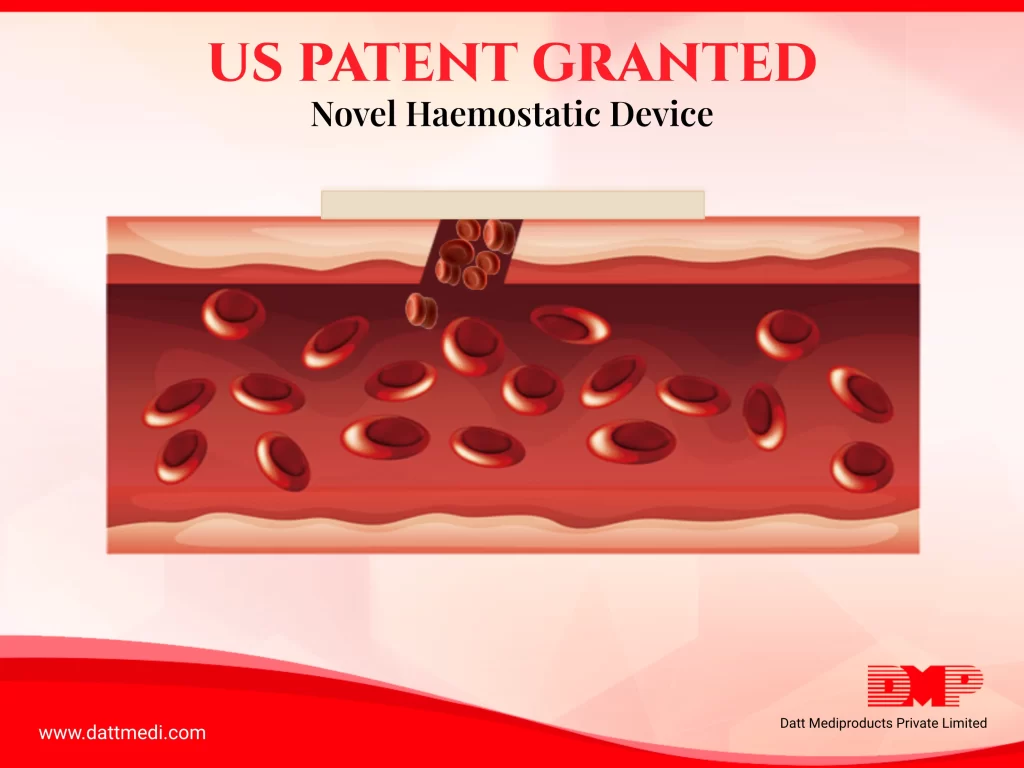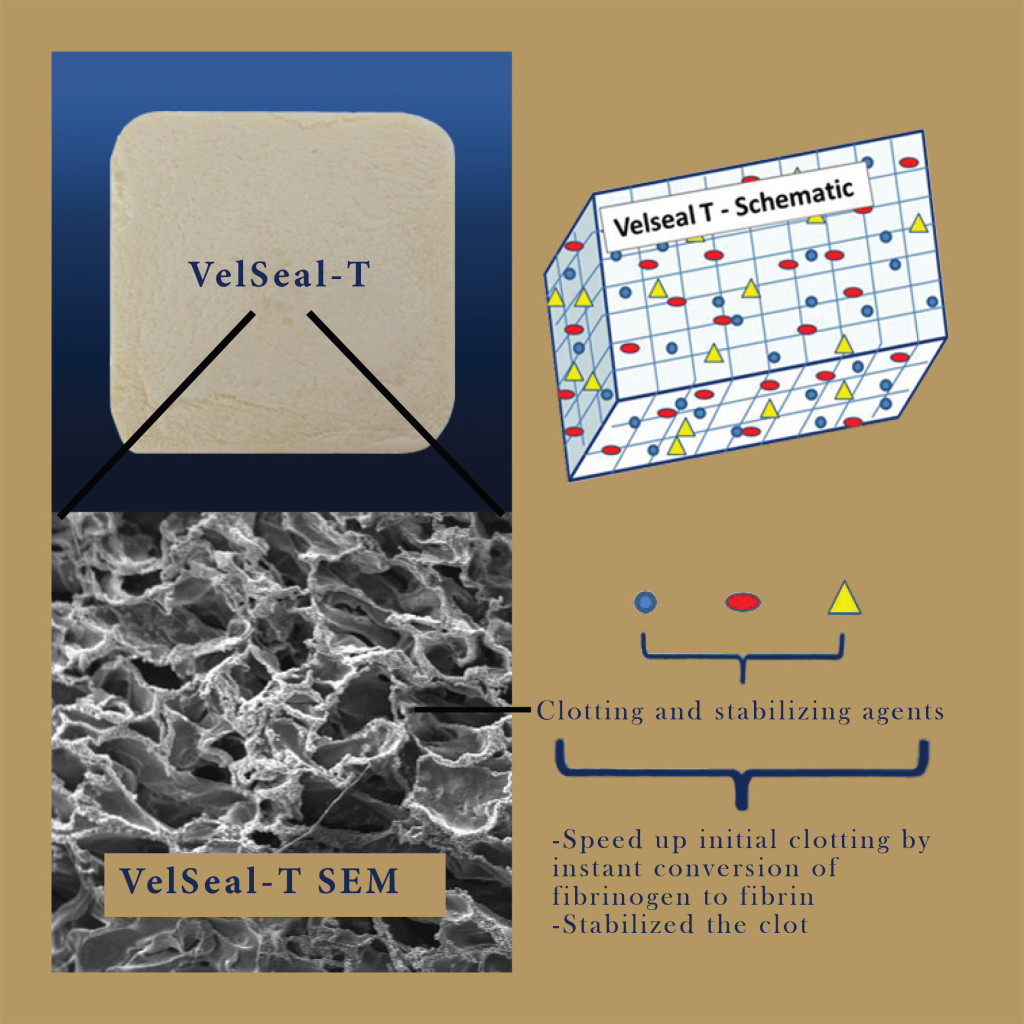
Patent No.: US 10,124,084 B2
Date of the Patent Granted: Nov. 13, 2018
Title of the Patent: READY TO USE BIODEGRADABLE AND BIOCOMPATIBLE DEVICE AND A METHOD OF PREPARATION THEREOF
Background of the Invention:
Haemostatic products are the agents which promote haemostasis (stop bleeding). These can be used for both surgical or traumatic wounds. Heavy blood loss from the wounds may result in a hypovolemic shock (when the body loses one-fifth of its blood and heart is not able to pump sufficient amount of blood to the body) leading to tissue and organ damage.
Several active ingredients are used in the manufacturing of haemostatic products. These ingredients like Thrombin, Gelatin, Collagen, Fibrin, Synthetic, etc. help to accelerate the process the haemostasis. Several products are available in the market but none of these products comprise of the active ingredients and the method to prepare the same as covered in the present invention.
Summary of the Invention:
The innovative product described in this patent is a ready to use biodegradable and biocompatible device used to stop wound bleeding and a method of preparation thereof.
The invention is a device comprising of a novel porous scaffold of an absorbent gelatin-chitosan Polyelectrolyte complex (GCPEC) which quickly stops bleeding from any type of wounds, i.e. surgical or non-surgical. This innovative device is developed with a combined application of air dry and freeze dry method.

This sterile dressing product carries the therapeutic and bioactive molecules with preference to accelerate the process of stopping the bleeding of the wounds.
The device has excellent ventilation features which prevent infections which may be caused due to bleeding. Further, the scaffold under the present invention comprises of differential porosity and regulated pores on the same platform in a molecularly integrated PEG matrix.
Advantages of the Invention:
- Ready – to – use bandage for stopping bleeding of wounds and prevents from loss of life due bleeding.
- The present invention stops bleeding within few minutes.
- requires less time to stop bleeding
- patient can be addressed immediately
- Prevents secondary bleeding.
- Does not stick to the wound.
- Does not disturb the normal of blood flow.
- The present invention comprises of improved wound hygiene.
- Useful in cases of multiple injury.
- Can be used in surgical procedures including Vascular surgical procedures, accidental and combat field.
- The present invention helps in earlier mobilization of the patient.
- Can be manufactured in any size and shape as per the requirement.
- Easy to handle.
- Interconnected Porous in structure.
- Packed in a laminated foil pack to protect it from environmental factors (sunlight & moisture).
- Thermostat pack (such as Styrofoam) as an insulator and to protect a product from getting compressed during transportation or storage.
- Multiple bandages can be applied for larger wounds.
- Capable of use for at least 24 hours, however, haemostasis achieves within few minutes only.
- Can be removed easily without using saline solution or water.
- Long Shelf life at ambient temperature. Can be disposed of by burning or degradation.
Follow us @DattMediproducts to know more about these Haemostatic products. Stay tuned for our next blogs and know more about our patented products.

